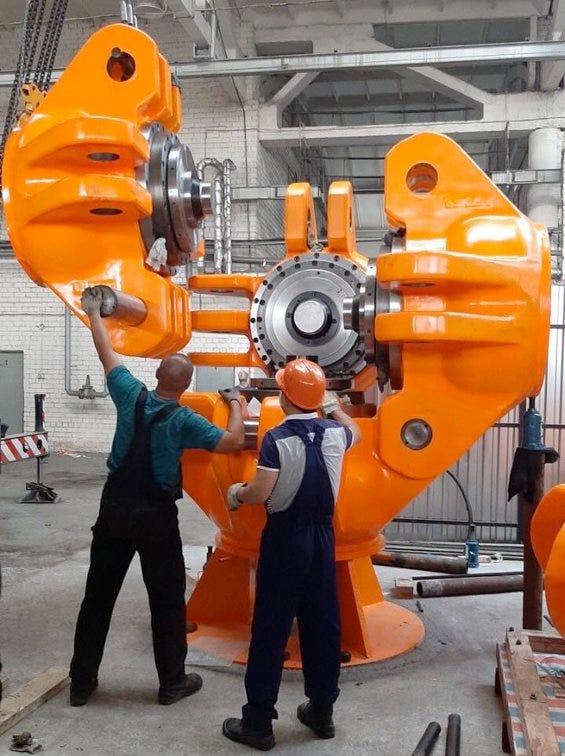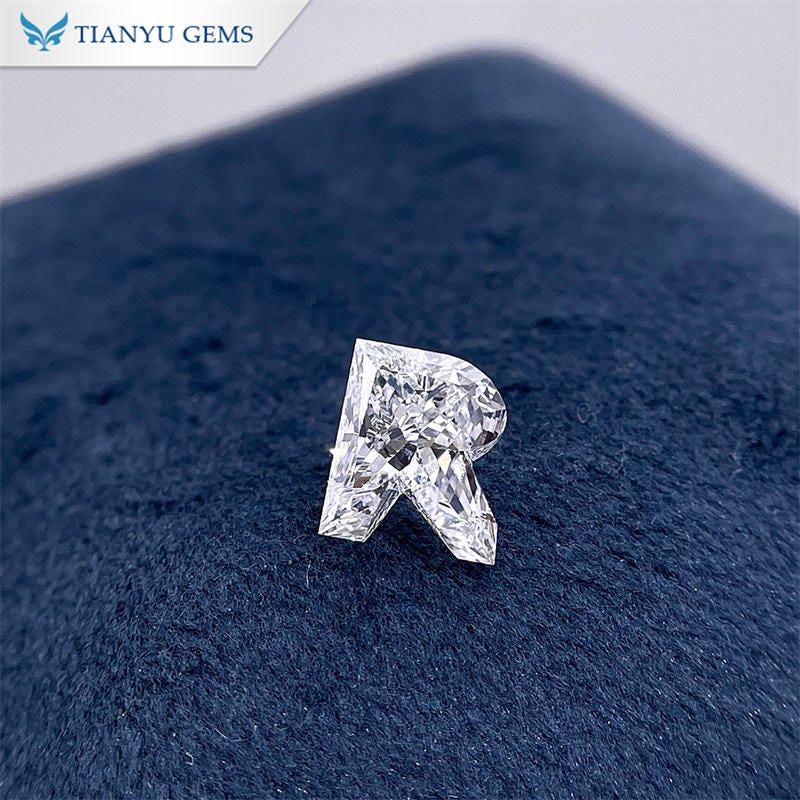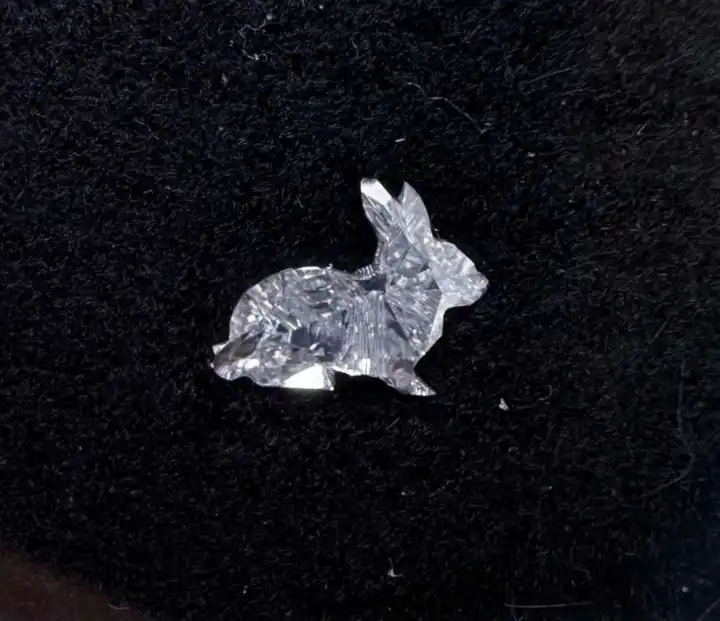Diamonds are a Trade War’s Best Friend
Will diamond export controls burst the AI bubble?
Nick Corvino joins ChinaTalk this year as a Tarbell Fellow, fresh off completing his master’s in China Studies at the Yenching Academy of Peking University.
Last week, China placed export controls on a wide range of rare earths and industrial inputs. Today, we’re taking a deep dive into the controls on lab-grown diamonds and why they matter.
Beijing’s restrictions target only industrial-grade synthetics used in chip fabrication and precision manufacturing. They can be important for wafer-slicing saws, polishing tools, and lithography optics, where extreme hardness and heat resistance are critical. Without them, producing advanced semiconductors and other high-tech components becomes significantly more difficult.
China is the world leader in synthetic diamond production, though by how much depends on whom you ask. Industry analyses suggest it accounts for roughly half of global output, while China Daily has claimed as high as 95% (this is too high..). It also dominates the manufacturing of key machinery such as high-pressure, high-temperature (HPHT) presses. This mix of capacity and machinery could let China squeeze parts of the chip supply chain, though its edge is less dramatic than some RREs like Terbium and Dysprosium.
What do diamonds do?
A diamond is made entirely of carbon atoms, each one tightly bonded to four others in a neat, repeating lattice. That structure gives it an uncommon mix of traits: it’s both the hardest material on Earth and one of the best conductors of heat. In practice, that means diamond can withstand enormous pressure without deforming and transfer heat faster than copper while remaining an electrical insulator.
These qualities are what brought synthetic diamonds into the semiconductor world. As chips for AI training grow hotter and denser, synthetic diamonds are becoming increasingly valuable for managing the resulting thermal load.
Since the 1950s, scientists have been able to make diamonds from scratch. These synthetic diamonds are molecularly identical to natural ones, but are grown in labs instead of forming underground. By recreating the extreme heat and pressure found inside the Earth’s mantle, or by building them atom by atom in controlled chambers, manufacturers can now produce crystals tailored for industry. That breakthrough allows the diamond industry to scale, no longer solely dependent on what can be dug out of the ground. Synthetic diamonds are now a critical component in slicing semiconductor wafers, printing chip designs, and improving radar capabilities (see the ‘Applications’ section for details).

Why China Leads in Synthetic Diamonds
China’s work on lab-grown diamonds began in the early 1960s, when researchers set out to make the country self-reliant in what were then called “superhard materials.” At the time, China couldn’t easily import industrial abrasives or natural diamonds, so it built its own high-pressure, high-temperature presses to produce them domestically. In 1963, China created its first synthetic diamond, becoming the fifth country in the world to do so. The effort echoed a broader post-war ambition to dominate foundational materials, such as rare earths and magnets, that technology and industry increasingly depended on.
Over the following decades, provinces like Henan and Shandong industrialized around diamond production, helped by cheap energy, access to carbon feedstocks (the raw materials that provide carbon atoms), and state support for superhard materials. By the 2000s, China was already producing the most synthetic diamonds in the world and had built an entire supply chain ecosystem around them.
China’s ‘Diamond Capital’
There are various places in China that have become the global hub for something highly specific. In the rare earth industry, the city of Baotou (包头市) in Inner Mongolia processes more than half of China’s rare earth minerals. Similarly, Dan Wang’s Breakneck describes how Zheng’an (正安) in Guizhou became “guitar city,” a small inland county that now makes about one in every seven guitars worldwide.
If Baotou is the rare-earth powerhouse, Zhecheng County (柘城县) in Henan Province plays the same role for synthetic diamonds. Home to fewer than a million people — very small, by Chinese standards — it has transformed from an agricultural county into China’s “Diamond Capital.” Local factories produce everything from micron-sized diamond powders to gemstone-quality crystals. Zhecheng now accounts for around half of China’s synthetic diamond output — roughly 4 million carats annually — and exports to more than 50 countries, amounting to an estimated 25–40% of global production.
Zhecheng also has the advantage of local clustering. Raw carbon feedstock suppliers, HPHT press makers, polishing workshops, and logistics firms all sit within literally a few square kilometers. That concentration lowers transaction costs, spurs reinvestment, and locks in process knowledge.

Overcapacity?
Just because China produces the most synthetic diamonds doesn’t mean it has the most leverage. In fact, the opposite may be true.
Like other parts of China’s manufacturing sector, the synthetic diamond industry could suffer from overcapacity, with too many producers chasing too few profitable markets, driving desperation to export abroad. Even the industry’s largest Chinese firms, including North Industries Group Red Arrow, Henan Huanghe Whirlwind, and Henan Liliang Diamond, reported sharp declines in revenue and profit in 2023, with their share prices staying relatively flat ever since and only modestly rising following the MOFCOM announcement. And Zhecheng County’s GDP per capita was ¥36,079 in 2024 (about $5,000), well below both the provincial and national averages. If China tightens export controls, it will inflict pain on domestic workers and manufacturers as well as overseas buyers.
How much do other countries depend on China?
How quickly could other countries scale production if China restricted exports?
Outside China, a handful of nations maintain smaller yet capable synthetic diamond industries focused on high-end or specialized applications. Element Six, a De Beers subsidiary headquartered in London, is the most prominent non-Chinese producer, manufacturing advanced diamond materials for cutting tools, optics, and semiconductor cooling. In East Asia, Japan has a few synthetic diamond companies, such as Sumitomo Electric and Tomei Diamond, and South Korea has ILJIN Diamond. India is taking a slightly different approach, favoring the slower, more expensive chemical vapor deposition process, which yields higher-purity stones than China’s majority HPHT method. Russia still leads in natural industrial diamonds — about 40% of global output — but that segment is increasingly obsolete compared to synthetic materials.
The United States has its own producers, including Hyperion Materials & Technologies and Applied Diamond Inc., but they lack China’s industrial scale. According to the U.S. Geological Survey, the U.S. remains heavily dependent on China for imports — roughly 77% of its industrial diamond supply — while another 8% comes from South Korea, 5% from the UK, and the rest from a long tail of countries.
Producing industrial diamonds at scale requires not only thousands of presses but also a dense network of coating, bonding, and classification facilities—and, crucially, the decades of process know-how now most concentrated in China. Western producers also face tougher environmental permitting for powder-handling and metal-bonding operations.
However, as diamond analyst Paul Zimnisky told ChinaTalk:
“In mainstream high-tech applications, the global industry is still in a nascent phase — so it is still to be determined who will ultimately be the biggest players in this space.”
China has not achieved a complete monopoly across the diamond supply chain, nor does there seem to be a segment or tool within the chain that only China can produce. Other countries can make key inputs, such as diamond presses, precision abrasives, and CVD materials, just not at the same scale. So, China’s leverage is real, but compared to entrenched sectors like rare earths, where it processes ~90% of global supply, the diamond industry has real global players who could likely step up to the plate and take advantage of the market opportunities export controls would open.
Applications
Diamond Saw!
The diamond wire saw (one of the diamond products China restricted) is a thin metal wire coated with fine diamond dust, used to slice huge blocks of silicon into the flat wafers on which chips are built. The process demands extreme precision. Each wafer must be perfectly smooth and even, because even microscopic irregularities can throw off the alignment of the billions of transistors that will later be etched onto its surface.
Not every wafer is cut this way. Older or lower-end manufacturing lines sometimes use slurry-based wire saws, where loose abrasives like silicon carbide are suspended in fluid to do the cutting. But over the past decade, diamond-coated wires have become the preferred choice, since they cut faster, waste less silicon, and leave cleaner, flatter surfaces. Synthetic diamonds, grown under controlled conditions, are uniform in size and hardness, allowing the wire to stay cool and cut with consistent precision.
That precision matters because every step of chipmaking builds on the wafer’s surface. Lithography machines must focus light with nanometer accuracy; deposition and etching layers have to align perfectly on top of one another. If the wafer is even slightly uneven or warped, this can mess up every subsequent step in the chip-making process.
(You can also buy a commercial-grade diamond saw at your local Home Depot!)
Optics and Lithography
Diamonds can also appear inside lithography systems, particularly in EUV machines that print the smallest and most advanced chips. The light inside these systems is so powerful that ordinary materials would warp or degrade, so manufacturers use diamond to handle the heat and maintain optical stability.
Diamonds can also be used to polish the mirrors and lenses inside lithography machines to near-atomic smoothness, a requirement for maintaining optical precision at nanometer scales, where even microscopic surface flaws can blur or misalign the projected chip pattern.
Wildcard: Diamonds as Future Chips?
Diamonds don’t just have to make semiconductors — they could one day become them. A semiconductor is a material whose ability to conduct electricity sits between a conductor and an insulator (hence the name ‘semi’ in ‘semiconductor’), allowing precise control over electrical current. Diamond’s wide band gap and exceptional thermal conductivity make it theoretically better than silicon for handling high voltages and extreme heat.
Researchers in Japan, the U.S., and China have already built prototype diamond transistors, but they’re still costly and hard to produce. Doping a diamond with boron atoms can turn it into a semiconductor, though the process remains difficult to control. More practically, companies like Diamond Foundry are experimenting with embedding small pieces of diamond into silicon chips to keep them cool and increase energy efficiency.
Military
Diamonds are also an important defense material beyond AI. Their hardness and thermal conductivity make them valuable for tooling munitions and cooling high-power radar and laser systems.
Unanswered Questions
After a week of research, here are the questions I couldn’t crack:
How quickly could non-Chinese producers scale if restrictions bite? Other countries can do chemical vapor deposition and make diamond saws — but how long would it take to match China’s scale and cost advantage if they were suddenly asked to increase supply?
Is there a single segment of the supply chain that only China (or another country) truly controls and can’t yet be replicated? My best guesses are:
the human know-how and culture in Henan;
HPHT press manufacturing and tooling (my current estimate is that China produces 80–90% of HPHT diamonds globally, though much of this output is low-cost and not high-enough quality for many industrial uses); and
catalyst & ultra-pure graphite feedstocks, since China is really good at graphite refinement and metallurgy.
Are governments planning for this? Who is implementing policies to reduce these vulnerabilities?
If you know the answer to any of these, or work in the diamond industry, I’d love to hear from you! Shoot me a message at: nick@chinatalk.media
Lily’s Notes on Diamond Jewelry
MOFCOM explicitly excluded jewelry-grade diamonds in the export controls. Why? It certainly would have hit Americans where it hurts — the USA is the world’s largest consumer of diamond jewelry, and in 2024, nearly half of all diamond engagement rings sold in the US contained lab-grown diamonds.
But Beijing is keen to argue that the new export controls are matters of national security, and not just an attempt to generate leverage in negotiations with the US. Restricting exports of gem-grade diamonds would undermine that argument, since they are very obviously not dual use.
Paul Zimnisky also noted that Indian producers are well-positioned to acquire market share in the wake of Chinese controls on industrial diamonds. If China also restricted exports of jewelry-grade diamonds, Indian suppliers would be incentivized to expand production to fill the gap. That would reduce the profitability of the nearly 1,000 Chinese firms that deal in lab diamonds — most of which are small businesses — even if the controls were temporary.
On diamond prices
In the wake of the new export controls, industrial diamond producers could pivot to producing gem-grade material (the playbook for this upgrade is not new). Such an abrupt increase in supply would decrease prices and eat into gem-grade diamond producers’ profit margins, as well as drive natural diamond prices even lower to compete.
But in fact, lab diamonds have already driven natural diamond prices down. In the words of diamond industry veteran Jon Phillips, “The diamond market has stabilized, but that doesn’t mean it’s not ripe for another downfall… [Natural diamonds] are inextricably tied to the lab-grown market.”
Chinese lab diamonds are available for 1/20th of the price of an equivalent natural diamond, with one-carat faceted stones available for as little as 1,000 RMB (~US$140). That price difference has helped lab diamonds grow from 1% market share in 2015 to about 20% today. That’s bad news for Botswana, which relies on diamond mining for 30% of its GDP, but certainly a win for enjoyers of sparkles the world over.
In addition to price and aesthetic considerations, there’s also an element of national pride that drives Chinese consumers in particular to choose lab diamonds. As Beijing-based jeweler Cheng Cheng 成诚 told ChinaTalk:
“From 2019 to 2023, many of my clients would ask about the difference between natural and lab-grown diamonds and tended to favor natural ones…. By 2024 and 2025, however, I’ve felt that many customers have become very comfortable with lab-grown diamonds. …
One reason for this shift is that lab-grown diamond manufacturing is centered in China. Confidence in “Made in China” products has grown rapidly, and Chinese consumers strongly recognize the country’s fast-developing lab-grown diamond technology.”
Some consumers will always prefer a gem that was formed over millions of years by geologic processes. But the beauty of lab-grown gemstones is that they expand the range of possibilities for artistic jewelry designs.



